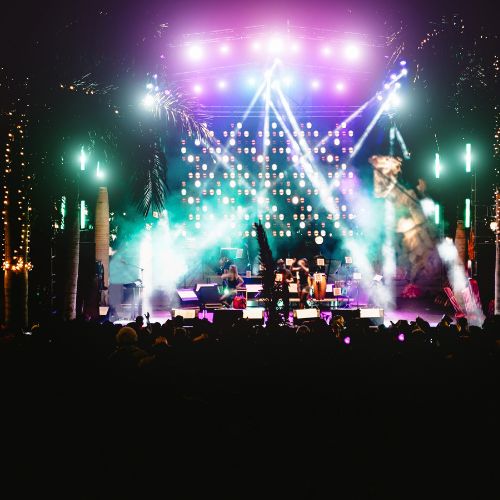
The Evolution of Pop Music: From the 90s to Today
Pop music has always been a reflection of its time, evolving with cultural trends, technological advancements, and shifts in the music industry. The 1990s marked a golden era for pop, introducing us to iconic artists, catchy melodies, and the birth of a new generation of pop stars. Since then, pop music has continued to evolve, embracing new sounds, production techniques, and diverse influences from across genres.
This guide will explore how pop music has transformed from the 90s to today, highlighting key trends, notable artists, and how technological advancements have shaped the way we listen to and experience pop.
The 1990s: The Golden Age of Pop
The 1990s was an iconic decade for pop music, filled with some of the most memorable songs and artists in history. It was a time when boy bands, girl groups, and solo pop stars ruled the charts. The rise of MTV and music videos also played a pivotal role in shaping pop culture and how artists connected with their audiences.
Key Trends of 90s Pop Music:
- Boy Bands and Girl Groups: The 90s saw the rise of hugely popular boy bands like Backstreet Boys and NSYNC, and girl groups like Spice Girls and Destiny’s Child. These groups dominated the airwaves with catchy, polished songs and choreographed performances.
- Solo Pop Stars: Artists like Britney Spears, Christina Aguilera, and Mariah Carey became household names, delivering chart-topping singles and albums. Their star power, combined with their vocal prowess and danceable tracks, defined much of the 90s sound.
- R&B Influence: R&B’s influence on pop music grew in the 90s, with artists like TLC, Aaliyah, and Janet Jackson blending smooth vocals with upbeat rhythms, creating a unique crossover appeal.
The music of the 90s was characterized by upbeat, danceable tracks, strong melodies, and memorable hooks, and many of these songs remain cultural touchstones to this day.
The Early 2000s: The Digital Revolution
The early 2000s brought significant changes to pop music as digital technology started to reshape the industry. This was the beginning of the digital download era, with platforms like iTunes allowing users to buy individual tracks, which changed the focus from album sales to single hits.
Key Changes in Early 2000s Pop:
- Pop-Rock and Punk-Pop Crossover: Bands like Avril Lavigne, Good Charlotte, and Blink-182 helped blend pop with rock and punk elements, giving rise to a new sub-genre that resonated with younger audiences.
- Hip-Hop Influence on Pop: As hip-hop continued to rise in popularity, its influence on pop music became more pronounced. Artists like Eminem, Missy Elliott, and Outkast brought rap into mainstream pop, and collaborations between pop and hip-hop artists became more common.
- Auto-Tune and Digital Production: The use of Auto-Tune and digital production techniques became widespread, most notably popularized by T-Pain and later embraced by other pop stars. This introduced a new, polished sound that defined much of the music of this era.
The early 2000s also saw the continued rise of solo female artists like Beyoncé, Rihanna, and Katy Perry, who each brought their unique styles and strong vocal performances to the pop scene.
The 2010s: Streaming and Genre Blending
The 2010s was a defining decade for pop music, largely due to the rise of streaming platforms like Spotify, Apple Music, and YouTube, which changed how music was distributed and consumed. This shift gave rise to more independent and diverse voices in pop, leading to a greater blending of genres and experimental sounds.
Key Trends of 2010s Pop Music:
- Genre Blending: Pop music in the 2010s became harder to define as a single genre, with artists pulling influences from electronic music, hip-hop, R&B, indie, and Latin sounds. Artists like Drake, The Weeknd, and Ariana Grande exemplified this genre-blending approach.
- The Rise of EDM-Pop: Electronic dance music (EDM) became a huge influence on pop, with producers like Calvin Harris, David Guetta, and Zedd collaborating with pop stars to create high-energy, club-ready hits. Songs like Rihanna’s “We Found Love” and Lady Gaga’s “Just Dance” became anthems of this era.
- Streaming’s Influence: The rise of streaming allowed for more niche sub-genres and independent artists to thrive. Artists like Billie Eilish and Lorde gained massive popularity through platforms like SoundCloud and Spotify, bringing a more alternative, experimental sound to pop music.
- Social Media and Viral Hits: Social media platforms like Instagram, TikTok, and YouTube played a significant role in shaping pop culture, with songs going viral overnight. Artists like Lil Nas X with “Old Town Road” leveraged platforms like TikTok to propel their songs to the top of the charts.
This era saw the democratization of music, where anyone with an internet connection could release a hit, leading to an explosion of creativity and diversity in the pop music landscape.
Pop Music Today: The Post-Genre Era
As we move into the 2020s, pop music continues to evolve, becoming even more diverse and inclusive. Today, pop music is no longer confined to a specific sound or formula but is instead a melting pot of different styles, cultures, and influences.
Key Features of Modern Pop:
- Global Influence: Thanks to streaming and social media, pop music today is more global than ever. Artists like BTS (K-pop), Bad Bunny (Latin pop), and Rosalía (Flamenco pop) have achieved international stardom, showcasing the power of cross-cultural influences in modern pop music.
- Social and Political Themes: Pop music has also become more socially conscious, with many artists using their platform to address issues like mental health, gender identity, and social justice. Songs like Halsey’s “Without Me” and Lizzo’s “Truth Hurts” touch on personal and political themes while maintaining a pop sensibility.
- Embracing Individuality: Artists like Billie Eilish, Lil Nas X, and Doja Cat have embraced individuality and authenticity, breaking the mold of traditional pop stardom. Their unique sounds and unconventional styles have resonated with a generation of listeners seeking something fresh and different.
The Future of Pop Music
The future of pop music is wide open, with technology continuing to play a crucial role in how we create, share, and consume music. Artificial intelligence (AI) and virtual reality (VR) are expected to become more integrated into the music experience, offering new ways for artists to connect with fans.
Additionally, as more artists embrace independence and direct-to-fan models, we can expect even more diversity in the types of music that gain mainstream popularity.






